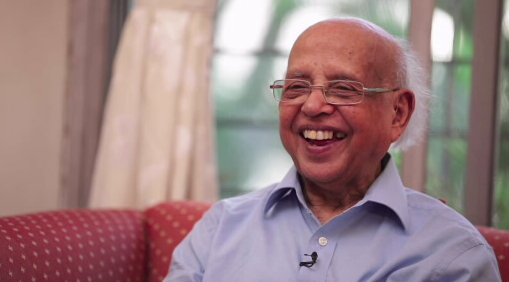| Description: | One of the pillars of radio astronomy has died, aged 91. Govind Swarup was the founding father of radio astronomy in India, and a world-recognised innovator in radio telescope design. He was a highly respected leader in the construction of ever larger radio telescopes, and the development of their science case.
The Ooty Radio Telescope (ORT), constructed from 1963 to 1970 in South India, is a 530m x 30 m parabolic cylinder aligned north-south on a suitably inclined hill (11 deg) to make its long axis of rotation parallel to that of the Earth, and allow 9.5 hours of source tracking.
The Giant Metre-wave Radio Telescope (GMRT) followed 25 years later. An array of thirty 45-m diameter dishes (total collecting area ~50,000 m2) near Poona. Of particular note were the low-cost antennas based on an imaginative design by Swarup and colleagues: Stretch Mesh Attached to Rope Trusses (SMART).
In between, Swarup led an international African-Indian proposal for the Giant Equatorial Radio Telescope (GERT), to be constructed in Kenya. A large array of parabolic cylinders with collecting area of ~200.000 m2. However, by the end of 1983, it was clear that GERT would not be funded.
Inevitably, the emergence of the Square Km Array (SKA) concept in the early 1990s owes much to Swarup. The GERT science case showed the way by pointing out the potential of a large collecting area for detecting neutral hydrogen in emission in the distant universe. This was the first formulation of what became the prime scientific driver for the SKA, about a decade before the same idea was independently put forward by Peter Wilkinson at Jodrell Bank, and Robert Braun, Ger de Bruyn and Jan Noordam at ASTRON. The SMART concept used for GMRT returned to prominence a decade later as one of the possible designs for the SKA antennas.
Govind received 20 national and international awards, and was elected a Fellow of the Royal Society, London, the Indian National Science Academy, and the Pontifical Academy of Sciences. He visited The Netherlands on many occasions, and spent a sabbatical in Groningen in 1979-80. He was excellent company, full of bubbling enthousiasm. He remained actively engaged in scientific research and telescope design until the end. He leaves behind Institutions and Facilities that he created in India, and generations of researchers working at the forefront of astronomy.
See also: https://www.skatelescope.org/ska-magazine/
|

